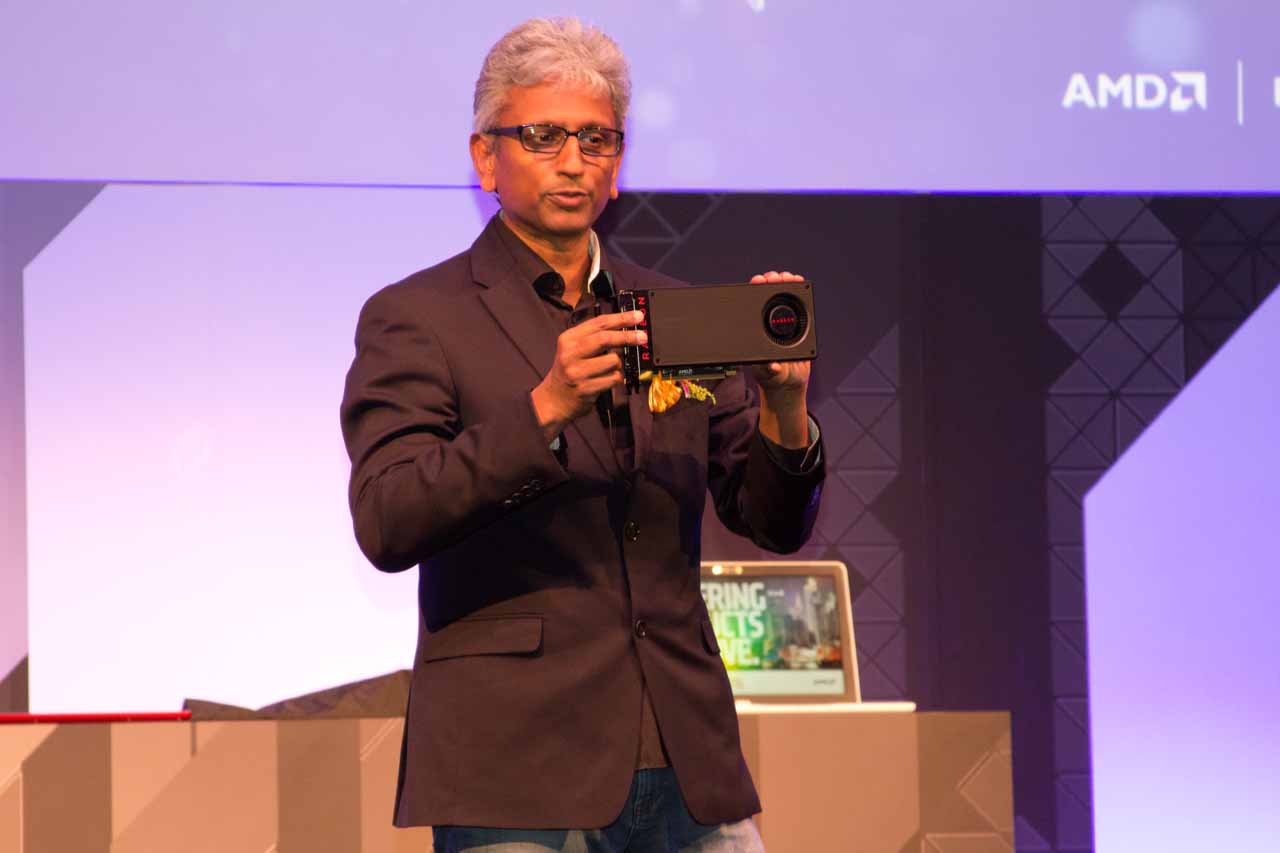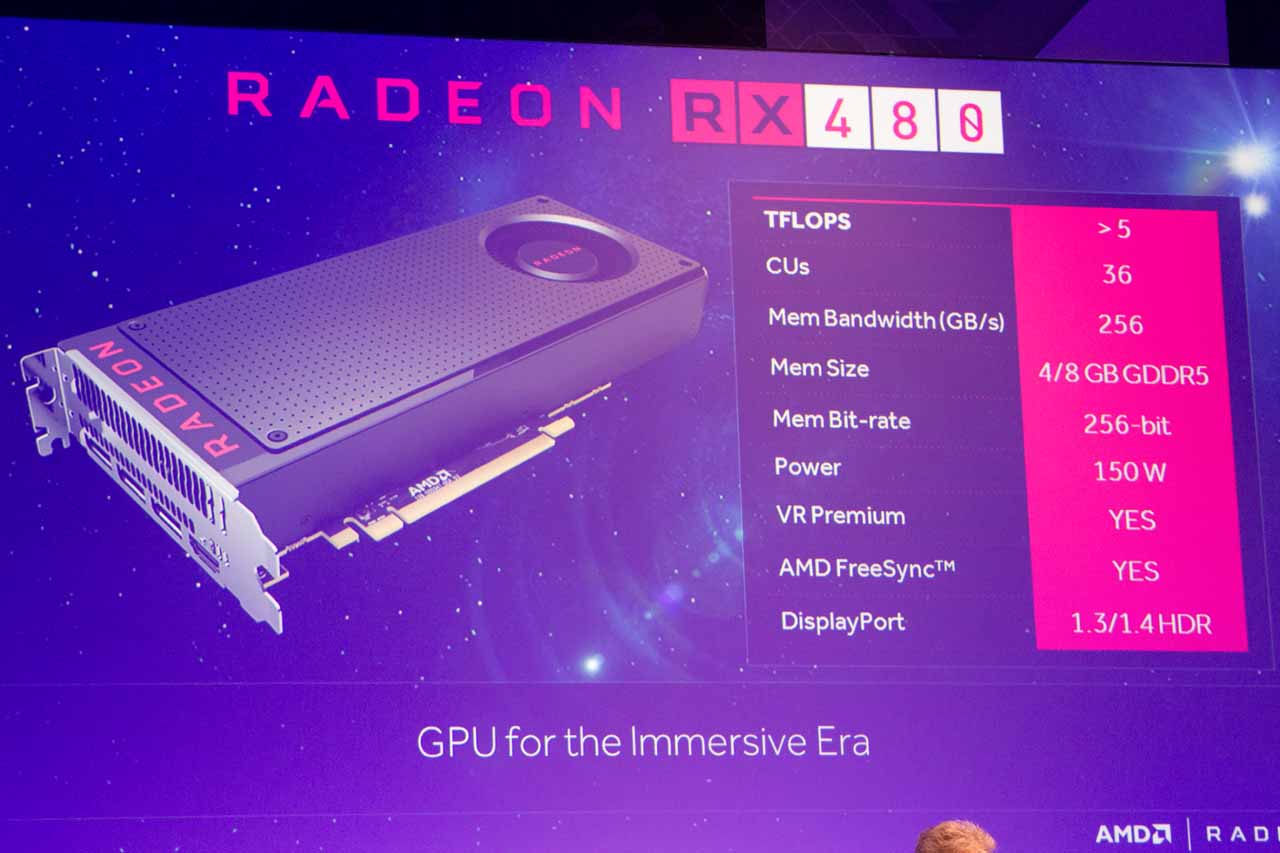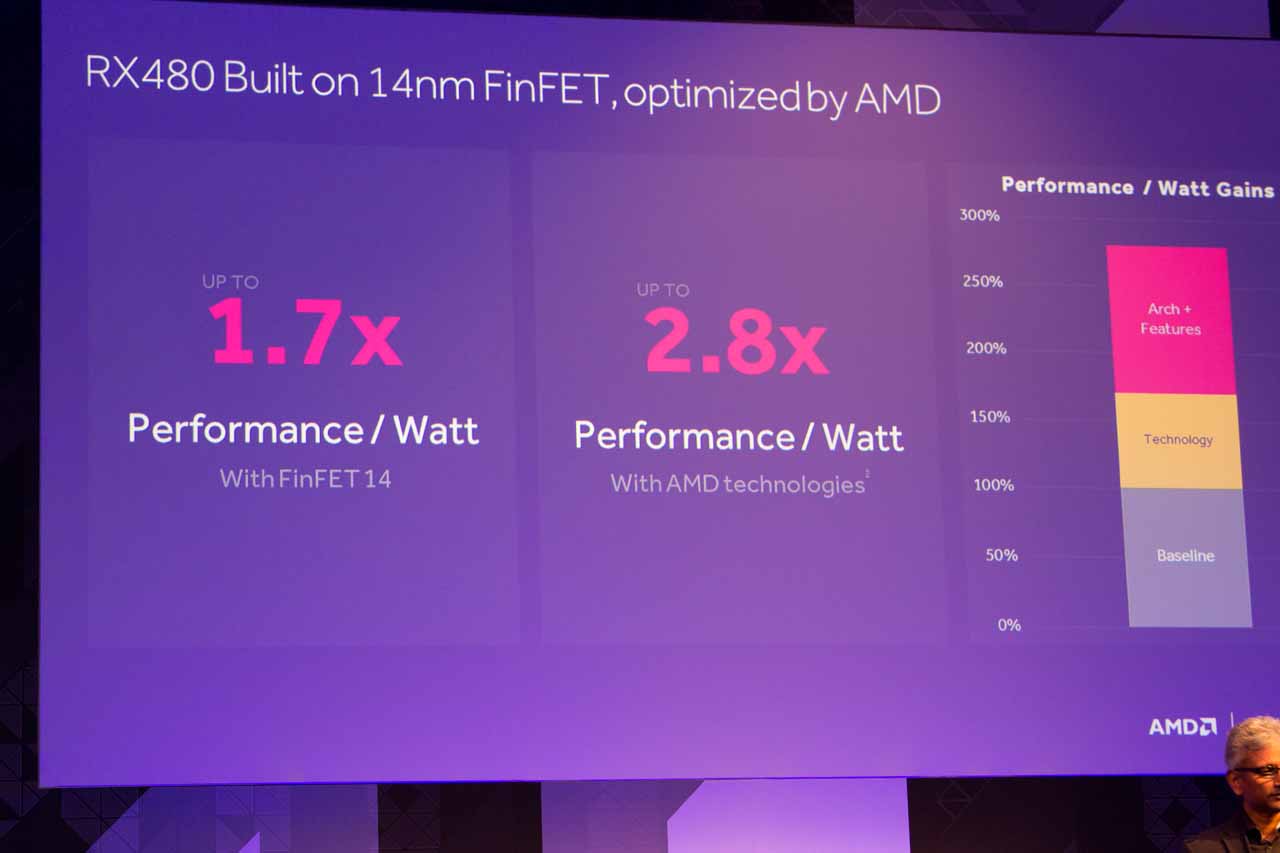AMD Radeon RX 480 Designed To Bring VR To The Budget-Strapped Masses
AMD's Polaris-based Radeon RX 480 graphics card is aimed at bringing VR performance to the masses.
On Day 2 of Computex 2016, we find ourselves with a new AMD GPU to talk about. We knew that we’d be seeing something related to Polaris, and that something is the paper launch of the Radeon RX 480.
AMD’s goal with the Radeon RX 480 is to drop a graphics card in the market that delivers $500 dollar performance at a much lower price point, targeting customers that want an affordable setup with which they can run a VR system. In fact, the RX 480 will cost just $199.
This jibes with what we know of AMD’s strategy--ceding the high-end to Nvidia for now in favor of attacking the middle and lower ranges of the market.
“VR needs to be everywhere, and VR needs to be for everyone,” said Raja Koduri, Senior VP and Chief Architect of AMD’s Radeon Technologies Group.
The Polaris GPU in the RX 480 runs with 36 CUs and is linked to either 4 or 8 GB of GDDR5 memory over a 256-bit memory interface. Its performance measures over 5 Tflops. The GPU doesn’t have any form of HBM memory, but as this is designed to be a budget-friendly graphics card, we suppose one can hardly gripe about the omission.
The RX 480’s TDP sits at 150 W, and it offers 1.7x the performance per watt thanks to FinFET 14 technology. Not only does it have DisplayPort 1.3 support, but it is also the first card to support DisplayPort 1.4 with HDR.
The RX 480 will be available as of June 29. AMD also promised that it would be unveiling more information about the Polaris product stack over the coming weeks.
Get Tom's Hardware's best news and in-depth reviews, straight to your inbox.
Follow Niels Broekhuijsen@NBroekhuijsen. Follow us @tomshardware, on Facebook and on Google+.
Niels Broekhuijsen is a Contributing Writer for Tom's Hardware US. He reviews cases, water cooling and pc builds.
-
turkey3_scratch The only thing we don't know is... performance. We know how Crossfire performs in Ashes of Singularity, but that's it! And even then, it's the FPS that AMD gave, and surely it is exaggerated some. I am thinking that Polaris will trade blows with Pascal depending on the game. I think certain DX12 games, especially those with Async Computer, will favor Polaris by a good margin, but the rest will be favoring Nvidia perhaps a bit. I don't know, it'll be interesting to see how things turn out. I was expecting them to unveil the RX 470 also, but I guess not.Reply -
kinney The wait between now and June 29th is not going to help AMD. That's a blunder as it gives NV plenty of time to get all the data they can through their sources and prepare their response. Whether that's lowering prices on Maxwell cards or getting a new card out.Reply -
ragenalien After all that posturing all we get is a GPU that barely competes with the now nearly two year old GTX 980. It's a wonderful price point and all but that's not going to lower the price of the 1070 much less the 1080. It's like AMD and Nvidia had a chat and decided to only release GPU's that wouldn't compete with each other.Reply -
comprodigy So we are forgetting the 1080 launched with DP 1.4 and HDR then? And I quoteReply
'Not only does it have DisplayPort 1.3 support, but it is also the first card to support DisplayPort 1.4 with HDR.' -
thor220 At $200 you could get two RX 480s or one founders edition 1070. Even if the performance isn't a huge leap it's hard to ignore the value.Reply -
rush21hit >$200Reply
>5,5 TFLOPS
>1x6pin
>150watts
While I know that single precision FLOPS performance does not always measure gaming performance, it's still a good indication. And I agree with Raja, VR needs to be accessible to many to bring out much more quality content and more aggressive pricing. At that level of single precision, this RX should have enough raw power to deliver.
He also said bringing $500 performance level, so..Nano level? Still a good thing nonetheless.
Now I wait on how the GTX1060 would fare. -
alextheblue ReplyIt's a wonderful price point and all but that's not going to lower the price of the 1070 much less the 1080. It's like AMD and Nvidia had a chat and decided to only release GPU's that wouldn't compete with each other.
This is more in my price range anyway. A battle at the top is less useful for mainstream gamers. This will force Nvidia to drop prices on their last-gen hardware big time. -
cryoburner ReplyAfter all that posturing all we get is a GPU that barely competes with the now nearly two year old GTX 980. It's a wonderful price point and all but that's not going to lower the price of the 1070 much less the 1080. It's like AMD and Nvidia had a chat and decided to only release GPU's that wouldn't compete with each other.
Why does it matter that cards with comparable performance existed in the "enthusiast level" segment a year and a half ago? The GTX 980 launched for $550. For the vast majority of people, that's as good as not existing at all. Most gamers aren't willing to spend much more than around $300 on a graphics card, if even that. However impressive the performance of Nvidia's newly launched cards might be, they're not going to be something that most will seriously consider purchasing in the near future. The mid to upper-mid range tends to be relevant to a lot more people. And within the coming months, both Nvidia and AMD will likely fill in the gaps to complete their lineups.
As for whether they worked together to release their cards this way, probably not, but I'm sure both companies have insiders to get information about what the other is doing. -
Imz Deodex It is good to see PC gaming becoming cheaper, accessible and more powerful compared to buying a console. It is sad to see my GTX 960 4gb being replaced now xDReply



